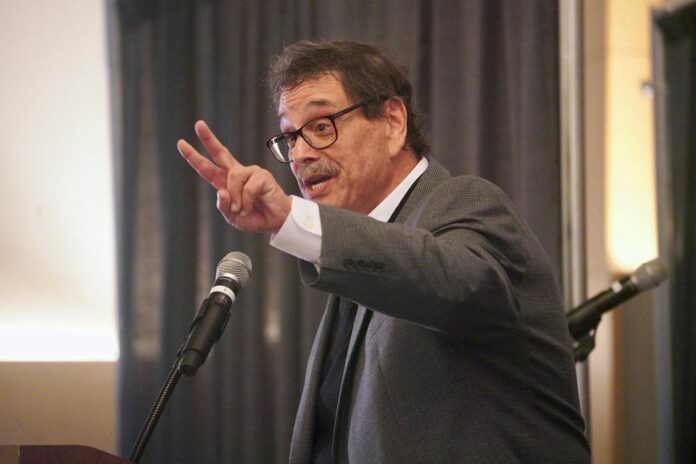
Looks at disparity gaps and discusses scorecard to track socioeconomic mobility
Los Cien Sonoma County held its sixth annual State of the Latino Community Address on Sept. 26 at Sonoma State University, where speakers and experts on economics and Latino entrepreneurship spoke to a crowd of over 600 community members on the topic of closing the social, political and economic gaps between Latinos and the wider Sonoma County community.
Perhaps the biggest topic of the morning, however, was Los Cien’s announcement that it will be working with Sonoma County Human Services on creating a scorecard to track socioeconomic mobility in order to look for ways to help Latino community members thrive.
Herman Hernandez, the chairperson of Los Cien, called the event “dynamic and impactful.”
“The work that we’ve focused on is economic impact, but we’re also focused on creating a scorecard in collaboration with the county department of human services,” Hernandez said.
According to Hernandez, the scorecard tracks Latino progress in five areas: political participation, education, financial stability, neighborhood engagement, health and environment.
Oscar Chavez, the assistant director of Sonoma County Human Services, dived into a discussion of how wide the gaps between Latinos and white people are in these five areas.
• In political participation, 59% of Latinos are registered to vote in the county, whereas 77% of Sonoma County residents as a whole are registered to vote; 11% elected officials in the county are Latinos, while 89% are white.
• When it comes to education, Chavez noted that 25% of Latino children are prepared for kindergarten, compared to 46% of white children. When looking at college, 11% of Latinos in the county have a bachelor’s degree, while 39% of whites do.
• In terms of financial stability, the median household income of Latinos is $59,000 whereas the median household income for whites is $76,000. Additionally, 38% of Latinos in the county are homeowners, while 65% of whites own their own home.
• In terms of neighborhood engagement, 30% of Latinos experience “linguistic isolation” versus 6% of the white population.
Hernandez noted that tracking the gaps between the Latino community and others in Sonoma County is important since Latinos are the backbone of the county’s agriculture, hospitality and construction industries.
The keynote speaker of the event was Aneesh Raman, senior adviser on strategy, external affairs, economic development and planning for Gov. Gavin Newsom.
Raman’s presentation focused on the economic disparity between the Latino community and other communities, as well as positive areas of growth. The presentation was based on the work of the California Commission on the Future of Work and the Institute for the Future.
In her presentation, Raman quoted a 2017 American Community Survey, which found that 50% of Latino workers in California make less than $15.
On the other hand, Raman noted that Latino-owned businesses are growing, representing 800,000 in California businesses today. According to Chavez, there are 6,760 Latino-owned businesses in Sonoma County, which represents 13% of all businesses in the county.
What’s more, according to Raman’s presentation, “From 2007 to 2018, number of Latina-owned business grew at the fastest rate of any demographic,” showing a growth rate of 172% versus a 12% growth rate overall.
According to her presentation, “One in four new businesses in the U.S. are now Latino-owned, and those businesses contribute more than $700 billion in sales to the economy.”
Marlene Orozco, the lead research analyst with the Stanford Latino Entrepreneurship Initiative, touched on opportunities of growth, opportunity gaps and economic stability in the Latino community.
According to Stanford Latino Entrepreneurship Initiative research, “Latino-owned businesses are outpacing Latino population growth, and the growth rate of Latino-owned businesses is outpacing the growth rate of all other demographic groups.”
In regard to Latino-owned business growth opportunities, Orozco added that there are a few strategies that could work to improve Latino business growth, including business certification, being networked and exporting goods and services.
Given the event’s slew of speakers, Hernandez said his biggest takeaway was being able to have a discussion on closing the gaps with such a large group of interested and energetic community members.
“For me I think it was being able to have 600-plus guests, members and community members from all facets of the county and the conversation relevant to closing the gap in our community,” Hernandez said, noting that Los Cien is is planning even more events for 2020.








